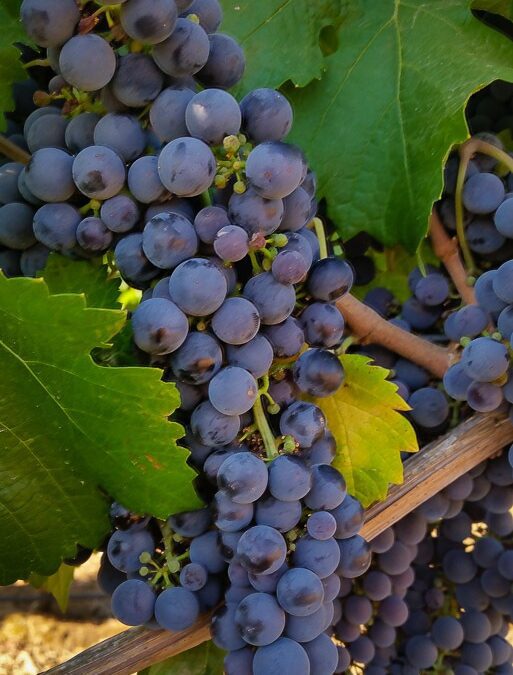By Bob Lipinski
At one time, Carmenère was a minor red grape variety used in the making of some red Bordeaux wines. The outbreak of phylloxera (a root-eating louse) during the 1870s devastated much of Bordeaux’s vineyards. When the vineyards were replanted, Carmenère, which was difficult to graft, was mostly replaced by disease-resistant grape varieties.
It was during that same time Carmenère arrived in Chile, alongside other Bordeaux varieties. As of 2020, the acreage of Carmenère has dwindled to where it is virtually extinct in France (under 100-acres), although some is grown in Chile, Italy, California, New Zealand, and China.
Carmenère is a thick-skinned, medium acid red grape variety. Its name is supposedly derived from the word carmine, a reference to its deep, rich color. According to DNA analysis, Carmenère is a cross between Cabernet Franc and Gros Cabernet. In Chile, it was officially categorized as Merlot until 1994, when the French ampelographer Jean-Michel Boursiquot visited Viña Carmen in Maipo Valley and correctly identified the grape as Carmenère. Carmenère is Chile’s fifth most planted grape with about 25,000-acres of vine, mostly planted south of Santiago,
Some recently tasted Carmenère wines are:
2017 Ventisquero “Obliqua” Apalta Vineyard “Carmenère,” Colchagua Valley, Chile. Blend of 94% Carmenère, 4% Cabernet Sauvignon, 2% Petit Verdot. The wine was aged for 22 months in French oak barrels, followed by one year of bottle aging. The Carmenère grapes come from a small selection of low-yielding grapevines that surround a great oak tree, Nothofagus Obliqua.
Deep ruby with a complex bouquet and taste of blackberry, red currants, black figs, chocolate, and hints of white pepper. Medium-full bodied with an aftertaste of herbs and dried berries.
2019 Ventisquero “Vertice” Apalta Vineyard, Colchagua Valley, Chile. Blend of Carmenère and Syrah. The wine is a collaboration between renowned Australian winemaker John Duval and Ventisquero’s head winemaker, Felipe Tosso. Vertice was aged for 22 months in French oak barrels, followed by 14 months of bottle aging.
Reddish-purple color with a bouquet of black fruit, especially blackberry and black raspberry. Flavors of black plums, black peppercorns, and smoky meat. Hints of herbs, damp earth, and eucalyptus with medium-high acidity.
2020 Leyda Carmenère “Reserva,” Rapel Valley, Chile. Full bouquet and flavor of spicy plums, blackberries, cherries, and black pepper. Medium-bodied with subtle hints of anise, herbs, and dark chocolate.
2021 Lapostolle Cuvée Alexandre “Carmenère” Apalta Vineyard, Colchagua Valley, Chile. Notes of blueberries, black cherry, green peppers, pomegranate, coffee, and vanilla. Aftertaste of plums, dill, and spices.
2020 Santa Rita 120 “Carmenère,” Central Valley, Chile. Cherry-colored with flavors of blueberry, green pepper, coffee, pomegranate, and tart-berries. The aftertaste had hints of licorice and cinnamon.
“Clearly, the pleasures wines afford are transitory- but so are those of the ballet, or of a musical performance. Wine is inspiring and adds greatly to the joy of living.” (Napoleon Bonaparte I)
Bob Lipinski is the author of 10 books, including “101: Everything You Need To Know About Whiskey” and “Italian Wine & Cheese Made Simple” (available on Amazon.com). He consults and conducts training seminars on Wine, Spirits, and Food and is available for speaking engagements. He can be reached at www.boblipinski.com OR bkjm@hotmail.com


 Bob Lipinski, author of 10 books; writes, consults, and conducts training seminars on Wine, Spirits, and Food and is available for speaking engagements.
Bob Lipinski, author of 10 books; writes, consults, and conducts training seminars on Wine, Spirits, and Food and is available for speaking engagements.
Recent Comments